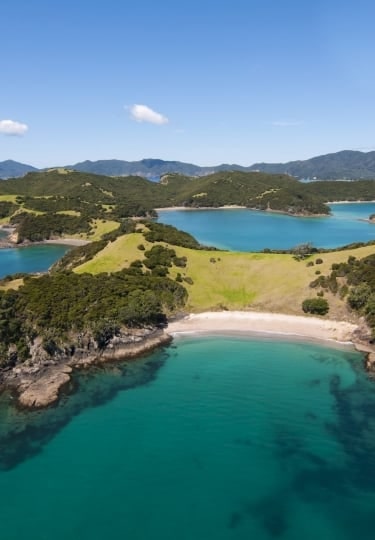The things to do in the Bay of Islands are as plentiful and varied as the islets, isles, and skerries that give this crucible of New Zealand its name.
Found on the North Island’s northern tip, this coastal region is a magnet for those wanting to explore some of the country’s most attractive wilderness. Beyond the kauri forest, rugged cliffs, and golden beaches, the region also reveals bright seams of history. It’s here that the Polynesian explorer, Kupe, first landed his canoe on New Zealand soil.
Here are 12 of the best things to do in the Bay of Islands.
See Giant Kauri Trees
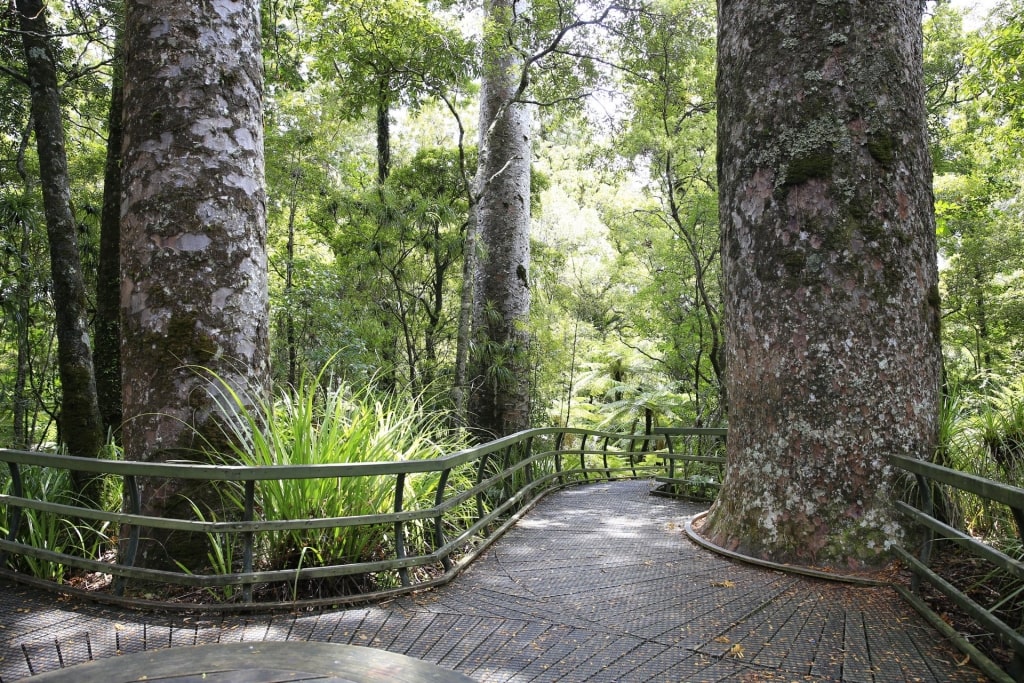
Puketi State Forest
Head inland from the Bay of Islands’ wooded coastline and you’ll come to Puketi State Forest.
This haven for the country’s wildlife—including the adorable national bird, the kiwi—is a vast tangle of native forest located between Whangaroa and Hokianga harbors. Walks into its interior, accompanied by symphonic birdsong and the rustle of critters in the underbrush, are an immersion in New Zealand’s natural bounty.
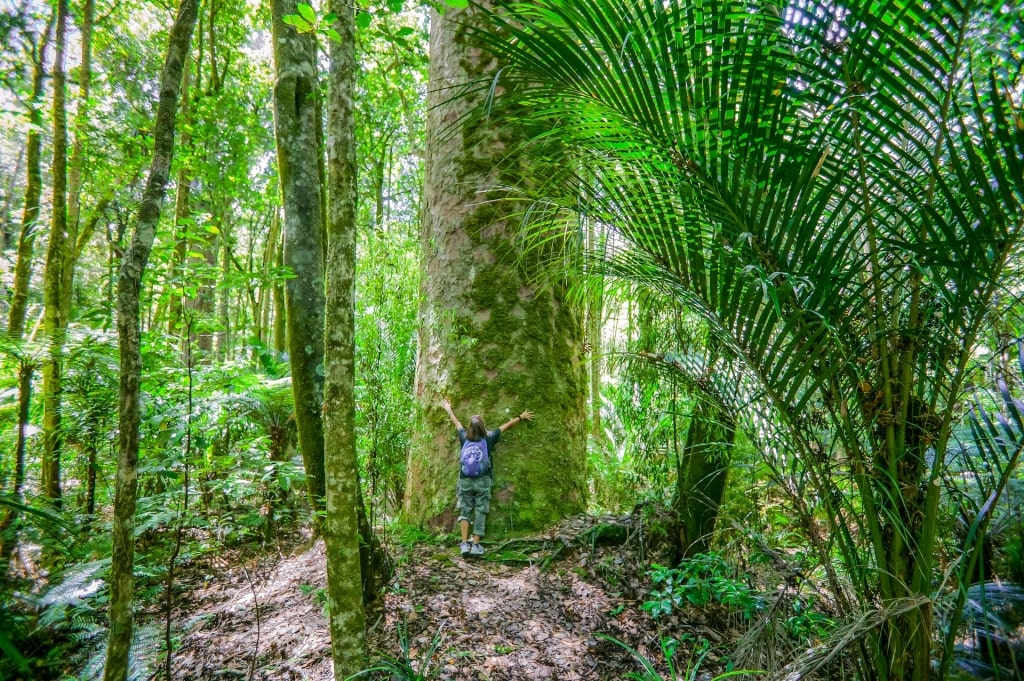
Puketi State Forest
But beyond the exotic fauna, it’s also a sanctuary to the giant Kauri (pronounced “ko-ree”) conifer, renowned for the immense girth of its trunks. The country’s Kauri forest was devastated when the Europeans first arrived on New Zealand’s shores. The timber of these slow-growing giants offered durability and rot resistance—properties ideal for shipbuilding.
Today, Kauri numbers have rebounded, and tracts of these skyscraper trees can be found on both islands. Near the town of Kerikeri, those keen to see these extraordinary silver-grey specimens can join the easy, one-hour Puketi Nature Trail. Be awed by these Maori-revered trees, while keeping one eye on the undergrowth for a scuttling Kiwi.
Float Through a Sea Cave
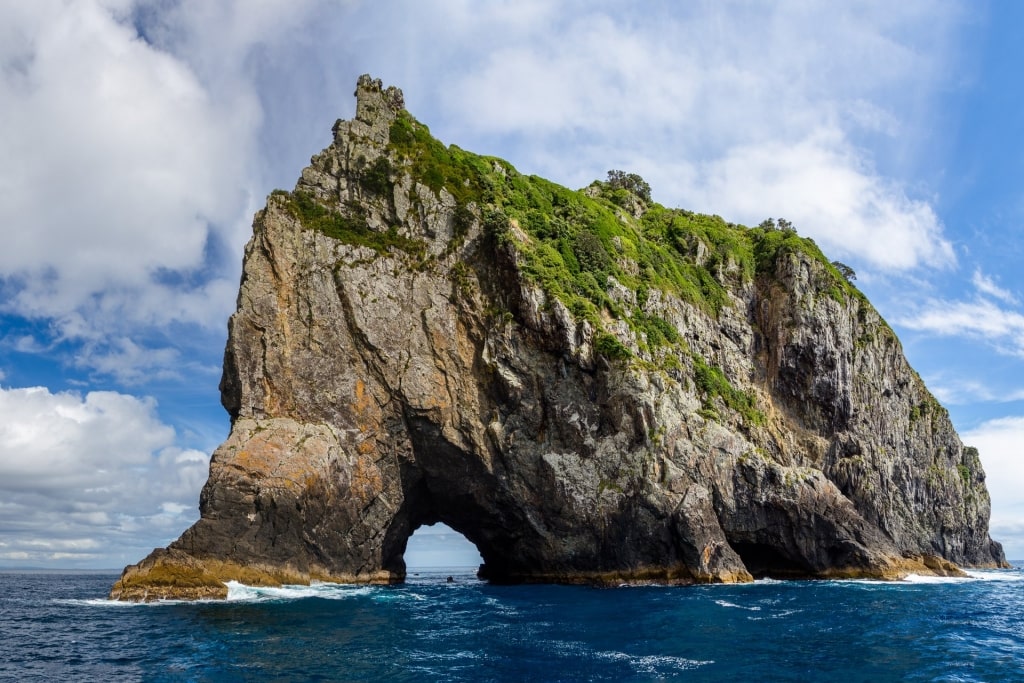
Piercy Island
Within sight of Cape Brett’s clockwork lighthouse, the profile of Piercy Island juts up from the navy waters of the Bay of Islands.
This island (also known as Motu Kōkako), its topography better for downhill skiing than a game of croquet, does have something that makes it rather special. On one side of its sloping profile, sunlight shines through a dramatic, naturally-formed sea tunnel.
Known as “the hole in the rock”, this nearly 53-foot passageway makes for one of the most unique things to do in the Bay of Islands. Your boat will nose towards the whitewashed edges of the tunnel, navigating carefully into the shady interior. The current passing through carries you effortlessly through, and onto your next Bay of Islands adventure.
Learn About Cape Brett’s Ancient Naval History
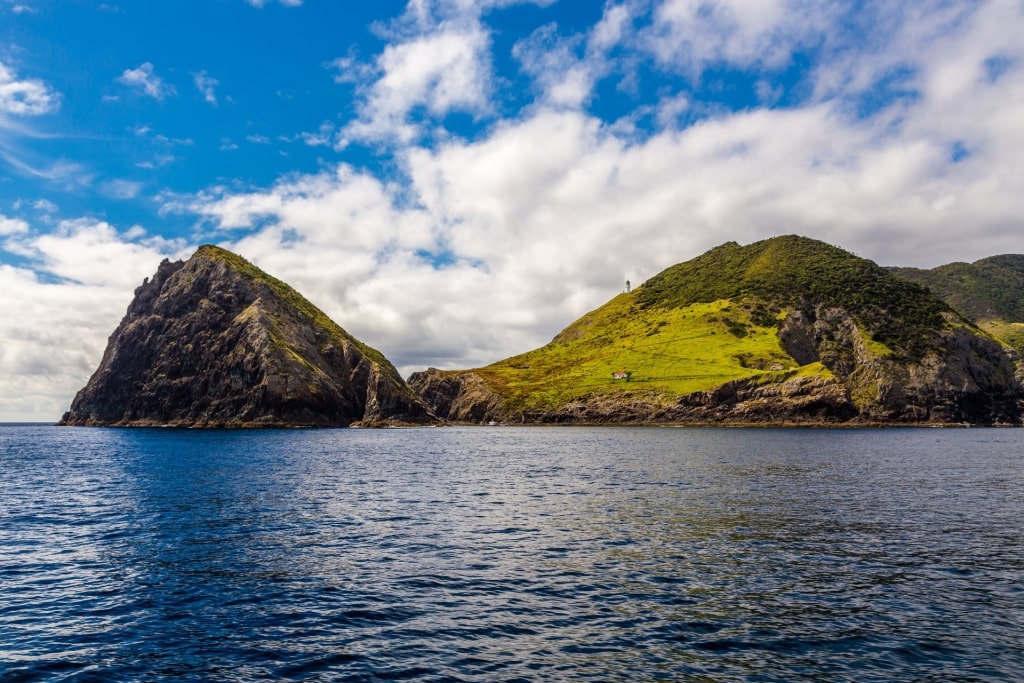
Cape Brett
Cape Brett is one of the Bay of Islands attractions that offers multiple charms: a mix of Maori and European history; panoramic views over the waters of the South Pacific; and a satisfying walk in a picturesque location.
Cape Brett caps the peninsula that forms the eastern edge of the Bay of Islands. Around 500 years prior to the construction of the Cape Brett Lighthouse in 1910, the first Maori arriving in “the Land of the Long White Cloud” reportedly used the dawn light of the peninsula’s sheer cliffs to assist their safe landing.
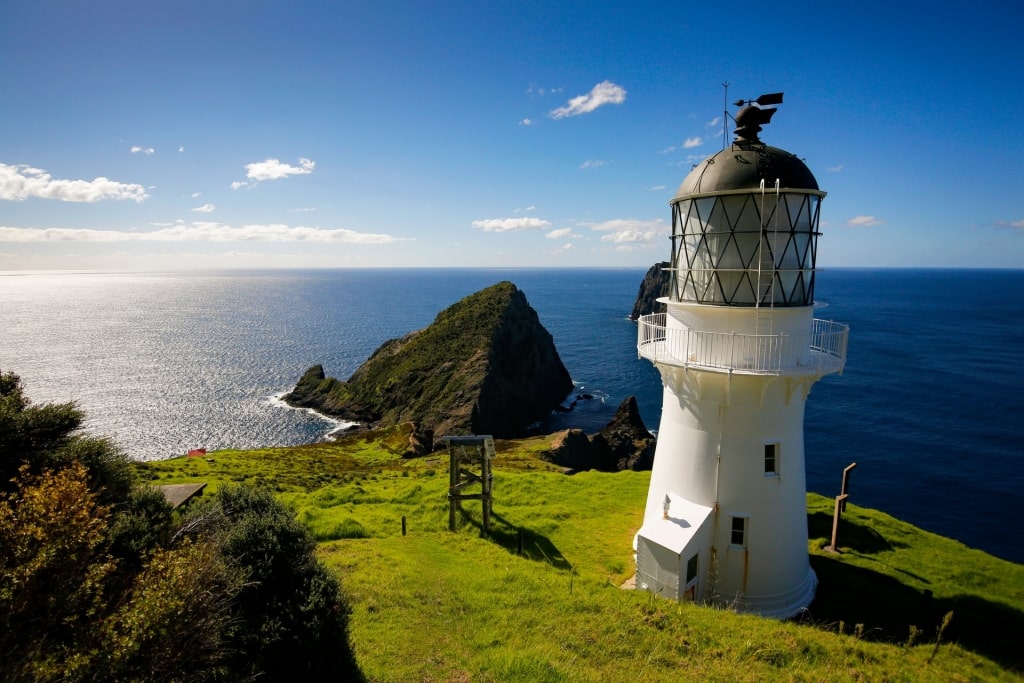
Cape Brett Lighthouse
Besides the stout lighthouse’s dramatic clifftop position, a visit to this sentinel of the shoreline for 70 years also offers great mechanical interest. It’s one of the last remaining examples of a type of lighthouse that employs a clockwork mechanism. Additionally, its pioneering mercury bath technology was, at the time, a source of national pride.
To reach the lighthouse, you can take the high road or the low. An option for those with time to spare is the spectacular 25-mile Cape Brett Track (you’d need to overnight for this in the former keeper’s cottage, now managed by the Department of Conservation).
Alternatively, disembark from a vessel at Deep Water Cove. The lighthouse is reached after a half-hour hike up the cliffs.
Join a Kayak Expedition to Haruru Falls
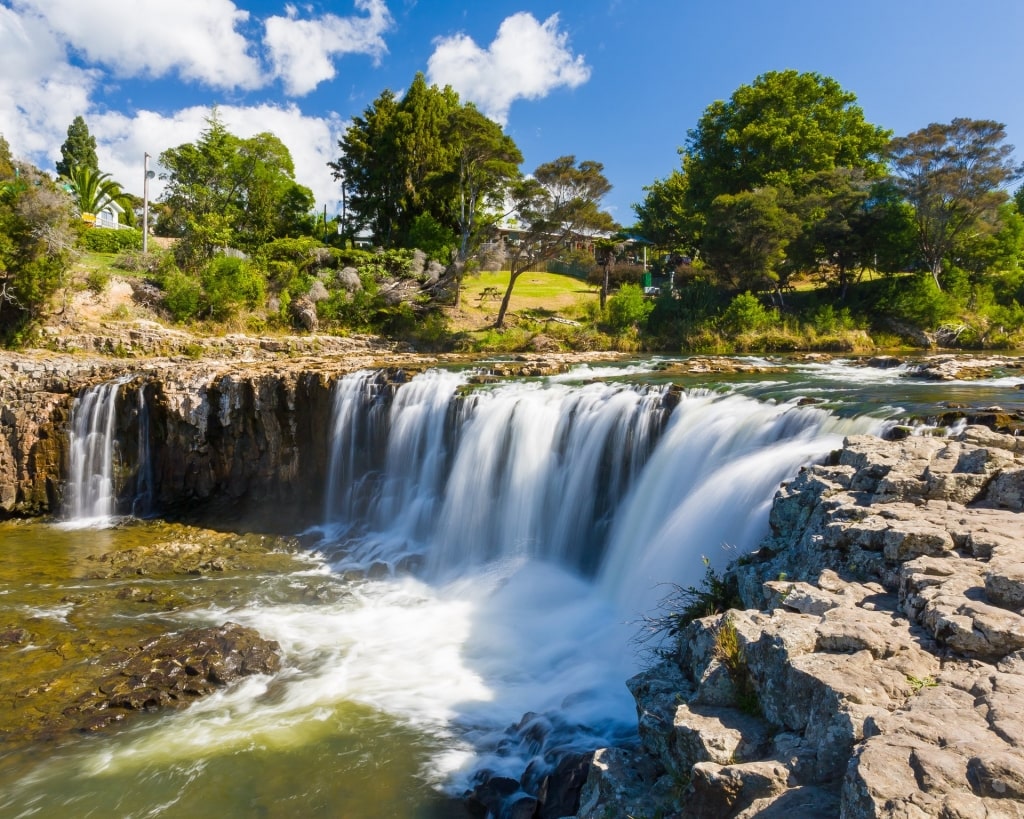
Haruru Falls
It’s hard to think of a more apt way of exploring this cradle of the Maori nation than on a canoe.
And while an antique Polynesian waka might be a tempting vessel for some, a simple, stable kayak will be best suited for this inland expedition through the Paihia and Waitangi Estuaries. You’ll paddle past mangrove forests whose drowned roots shelter numerous fish, waterbirds, and other native curiosities.
As you glide over the water, your guide will illuminate the surroundings with tales from the past. A distant roar will announce your arrival at the Haruru Falls tidal lagoon. You’ll sit and absorb the sight and sound of this magnificent waterfall, the stories of the Maori whispering in your ears.
Visit Waimate Mission
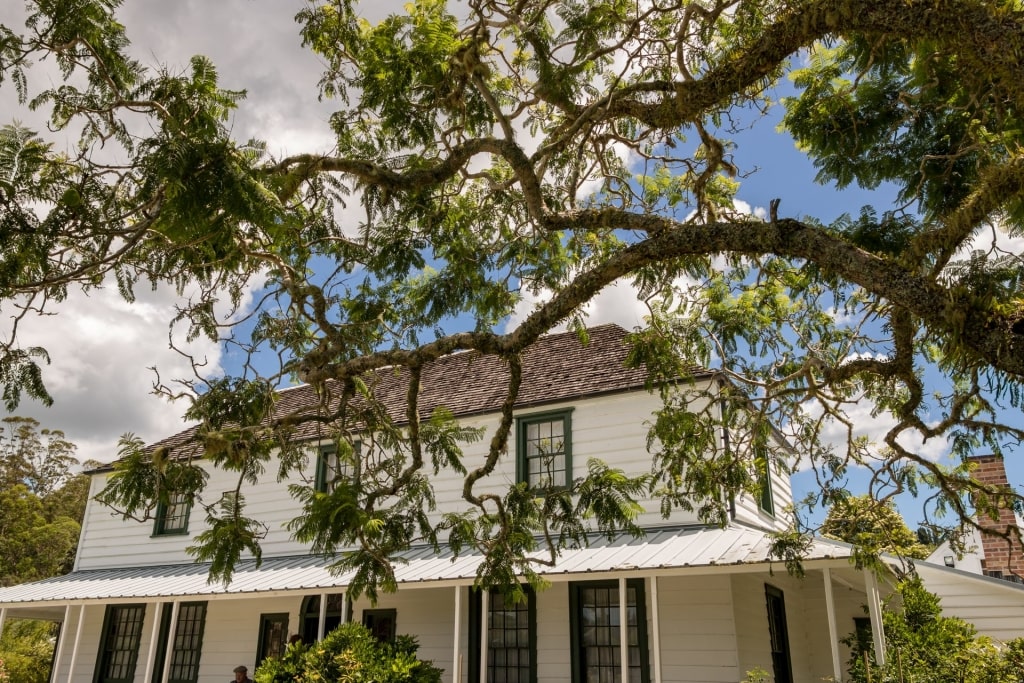
Waimate Mission
The second-oldest building in the country after the 1822 Mission House in nearby Kerikeri), Waimate Mission has evolved into a stately museum concerning the first European farm in New Zealand.
Established by English missionaries, the Waimate Mission was originally part of a sizable mission station intended to offer guidance on agricultural practices (with a smidgen of proselytizing thrown in). Their desire to influence the Maori spiritually was only matched by their efforts to transform the native landscape into an imitation of the English countryside.
Today, the Mission is maintained almost as it was in the 19th century, with china-laden Welsh dressers, cast iron pots, and period clothing on display. Upon the grounds, you’ll also find a small church, an oak-shaded cemetery, and a gorgeous English garden complete with Victorian-era plantings.
Part-guided tours are available that help you dig into New Zealand’s early history. You’ll hear stories and see displays about famous visitors to the mission such as Charles Darwin, who stopped in for Christmas dinner in 1835. The Waimate Mission was also a venue for the second signing of the Treaty of Waitangi—New Zealand’s founding document.
Photograph Thundering Rainbow Falls
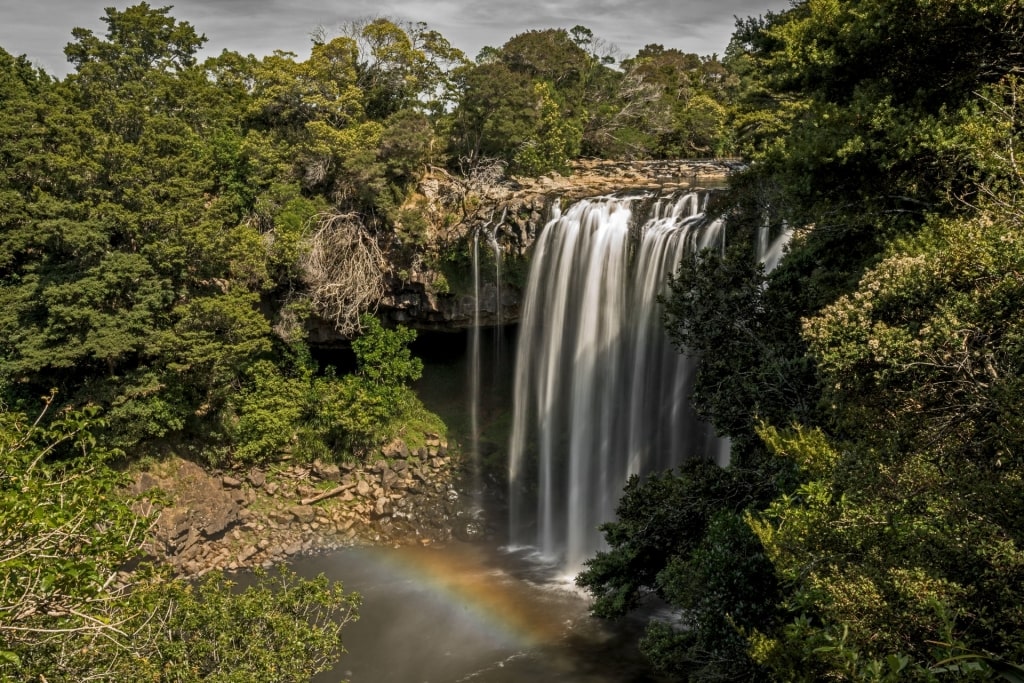
Rainbow Falls
Close to Kerikeri, the Bay of Islands’ largest town, the Rainbow Falls is a handsome veil of water ensconced within the forest.
This popular spot is easily reached after a five-minute walk from the eponymous car park. There are three viewing areas at the top of the falls, and a well-situated bench beside the plunge pool at the bottom.
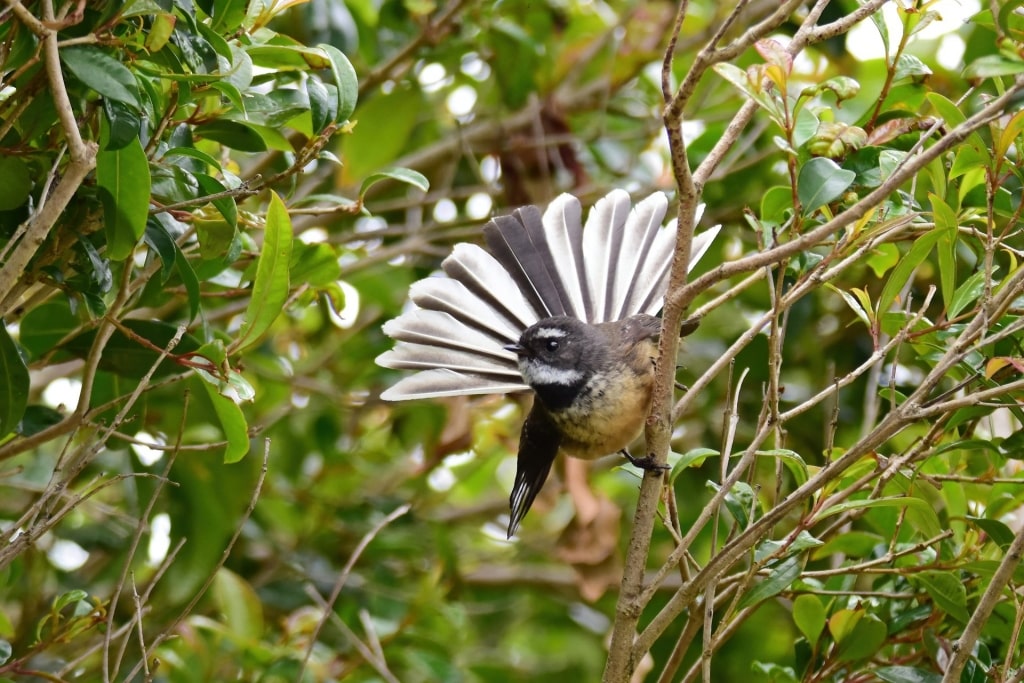
Fantail
Visit after rains and the water really thunders over the precipice. Fantails (or piwakawaka), a native bird with impressive courting feathers, call “cheet cheet” to each other among the branches.
If you want to walk a little further, you can follow the Kerikeri River Track, part of the Te Araora Trail. Along its hour-and-a-half route, you’ll pass a disused hydroelectric plant as well as regenerated kauri and tōtara forest.
Read: North Island, New Zealand: 11 Incredible Places to Visit
Visit the Birthplace of the Nation
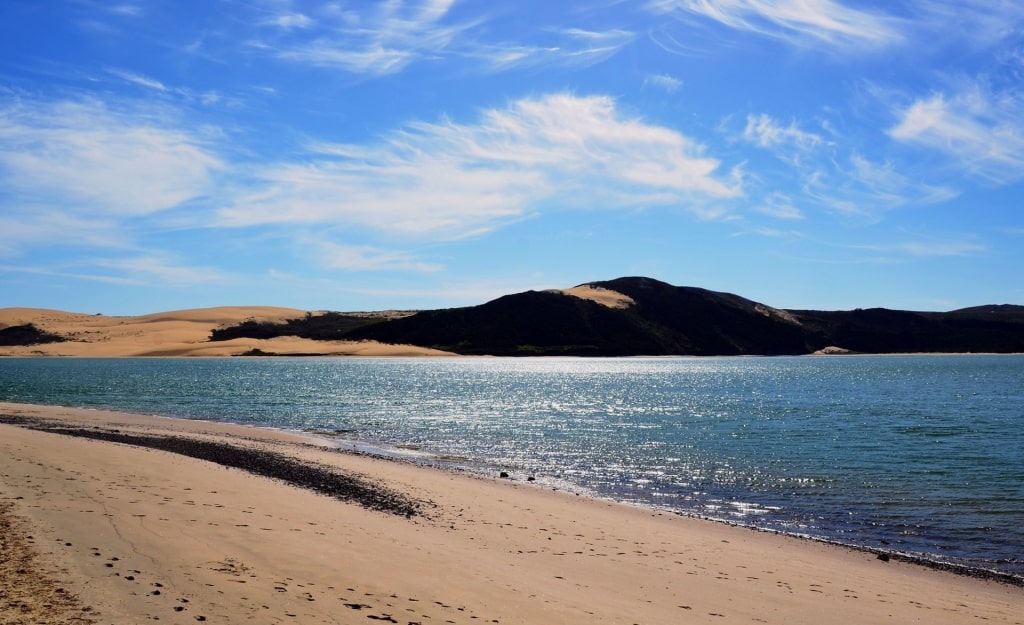
Hokianga Harbour
A visit to Hokianga Harbour is high up on the list of the most affecting things to do in the Bay of Islands.
It’s here, in what is now the country’s fourth-largest harbor, that the Maori’s Polynesian ancestors first landed their ocean-going waka on New Zealand sand. When the Europeans arrived, Hokianga became the island’s main harbor with shipwrights flourishing and pubs stocked with rum, grog, and tales of the treacherous sand bar at the harbor’s mouth.
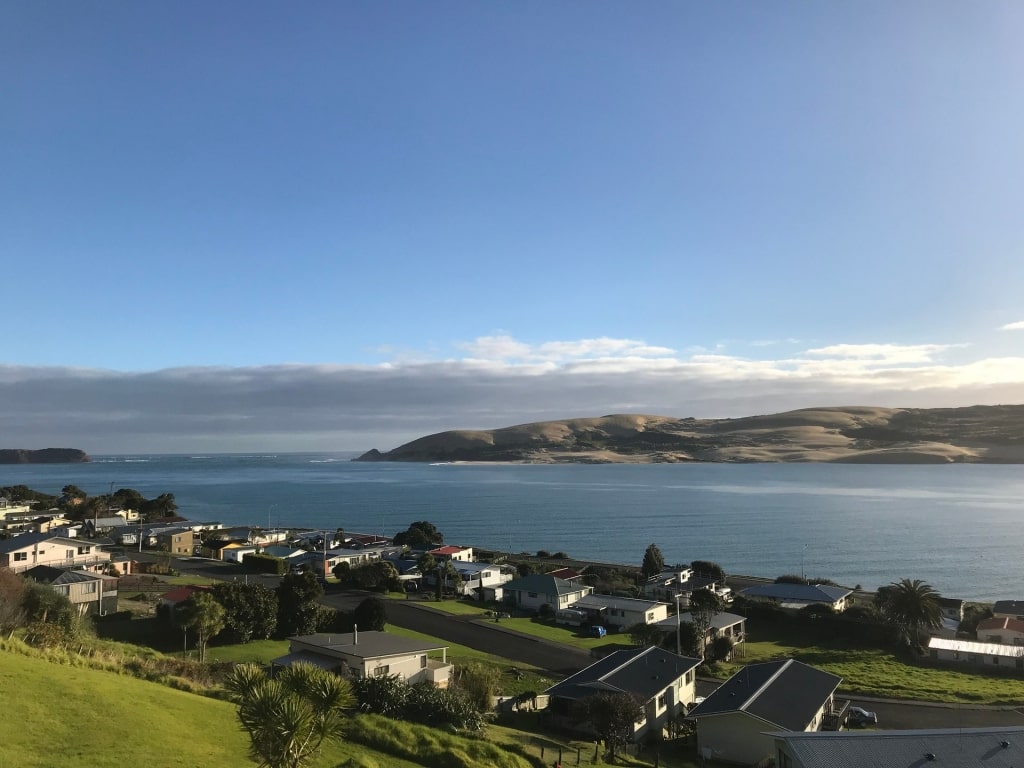
Hokianga Harbour
Happily, the “canoe eater” (as the sandbar was nicknamed by the local Ngapuhi tribe), is no longer the problem it once was. Today, the peaceful harbor is dotted with fishing villages and it’s become a bolthole for Aucklanders looking for some R&R. The area is also a wonderfully diverse part of the coast, with giant sand dunes and thriving wetlands to explore.
It’s also a shrine to the arrival of Kupe the explorer and his people from Hawaiki. If you have time, you can experience the multimedia “Manea—Footprints of Kupe” for a 75-minute tour delving into this story about the origin of the nation.
Of course, even on hallowed ground, the Kiwis have found a way to add a thrill-seeking element. Down the grand, 495-foot dunes, you can coast down on bodyboards to startle the oystercatchers and dotterels prospecting at the water’s edge. Get a ride to the dunes on the Hokianga Express boat that departs from Oponomi Wharf.
Kick Back on Urupukapuka Island
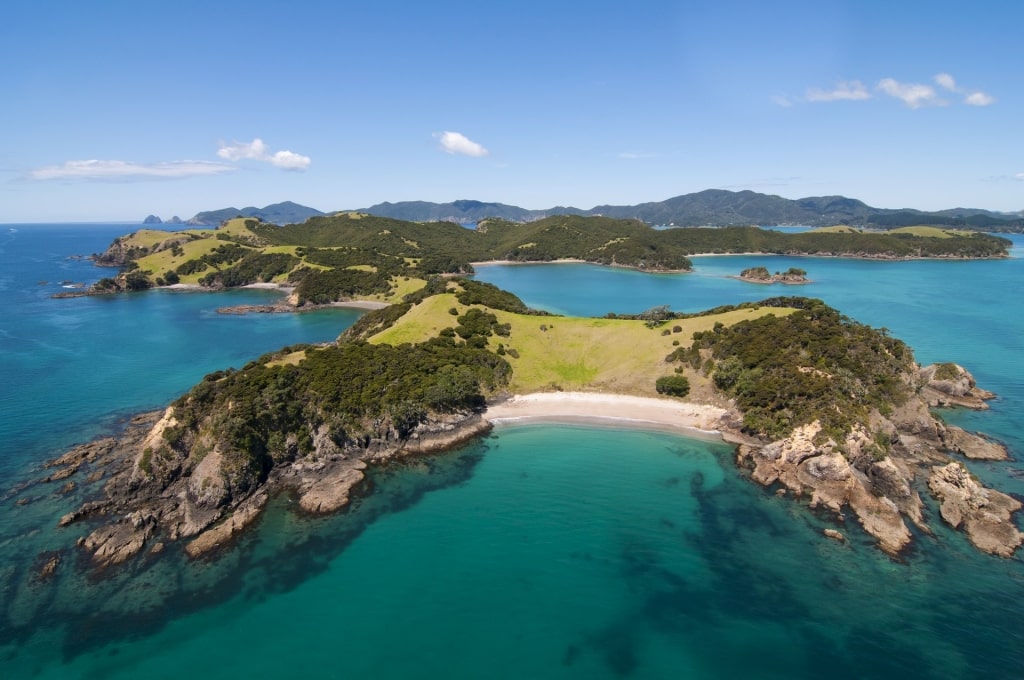
Urupukapuka Island
A day trip favorite for the lucky locals who call the bay home, Urupukapuka Island is the largest island here, as well as one of the most attractive.
With its unexpected coves and undulating hills, Urupukapuka is perfect for an easy hike that takes in the beauty of the archipelago in all directions. The mews of seabirds float on the breeze while catamarans anchor off tiny deserted beaches. Beneath the teal surface of the lapping sea, divers explore a dynamic volcanic seascape.
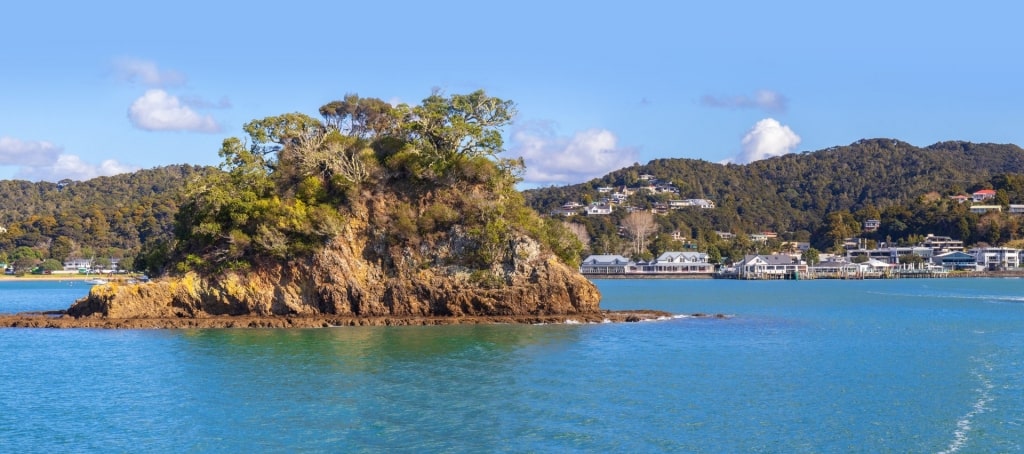
Paihia
Most visitors arrive via the 40-minute ferry from Paihia, with bottlenose dolphins often playing in its wake. Disembarking in Otehei Bay, you’ll see fish thrilling through the translucent water. Before you are a beach and a restaurant, all enclosed within an embrace of woodland and fruit trees. What a welcome.
Descend Into a Subterranean Light Show
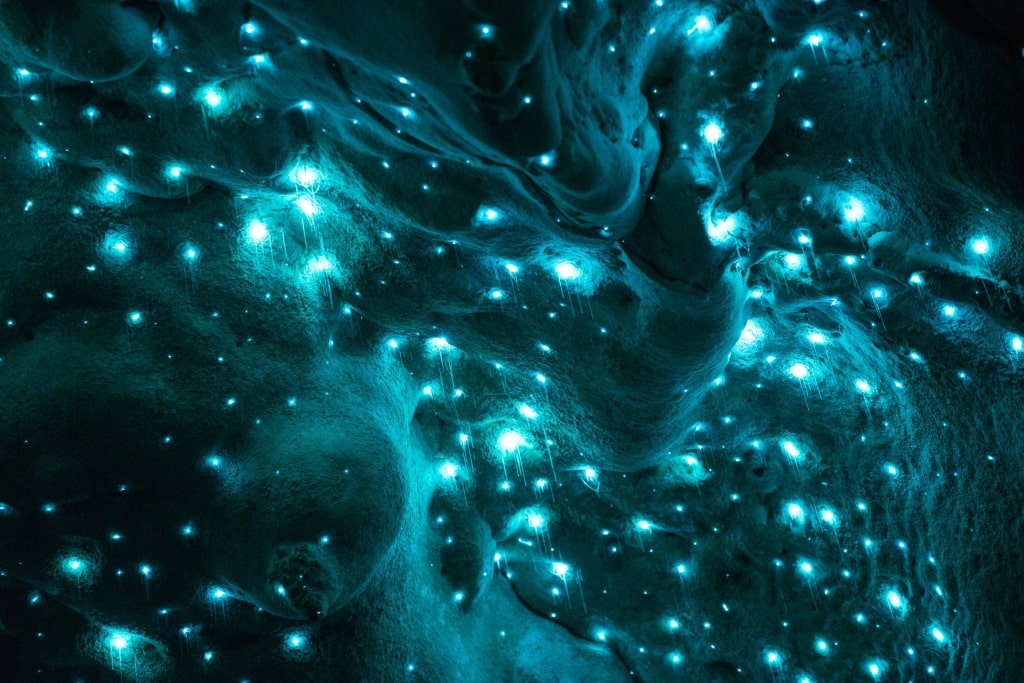
Kawiti Cavern
While New Zealand is renowned for its snow-capped mountains, verdant archipelagos, and birdsong-filled rainforest, it can also be (quite literally) dazzling beneath the surface.
Endemic to the country is a peculiar species of gnat—wait for it—that lays its eggs in caves. The gnats’ larvae glow in these caverns of perpetual night with a silvery luminescence that, collectively, creates a starry sky effect where no starlight has ever penetrated.
The Kawiti Cavern glow worm population is a must-see among the Bay of islands’ attractions. About twenty minutes’ drive south of Paihia, you’ll enter a seemingly boundless network of underground passages and erosion-hewn chambers, the glow worms glittering from between the stalactites.
Eat Your Way Around the Bay
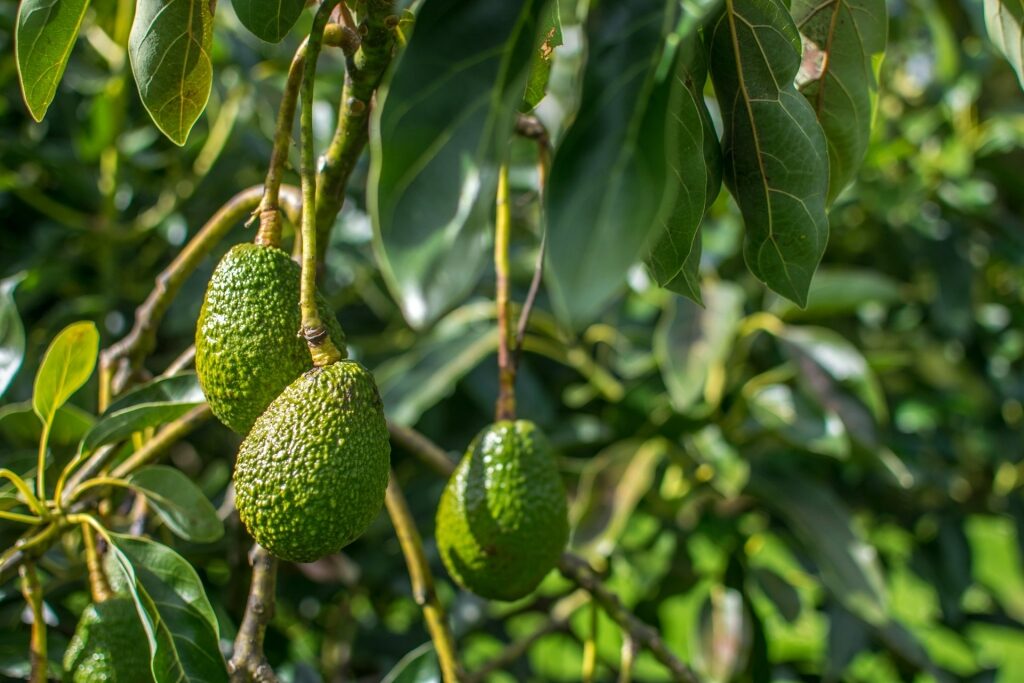
Olivado
With its subtropical climate and fertile land and ocean, the Bay of Islands offers a regional cornucopia of top-notch produce. On a trip to the region, a food tour is a must.
You’ll begin at Olivado. Amid the olive and avocado groves of this Kerikeri farm, you’ll hear how a collaboration between a former chef and food scientists helped perfect the process of extracting oil from avocados. You’ll witness the process and sample these healthy oils.
Next, you’ll make a beeline for The Honey Shop. Here you’ll step inside the country’s largest hive surrounded by the bees busying themselves with the production of the golden nectar. The visit concludes with a taste of exotic honey varieties such as Pohutukawa (known as the “New Zealand Christmas Tree”) and Manuka, with its impressive medicinal qualities.
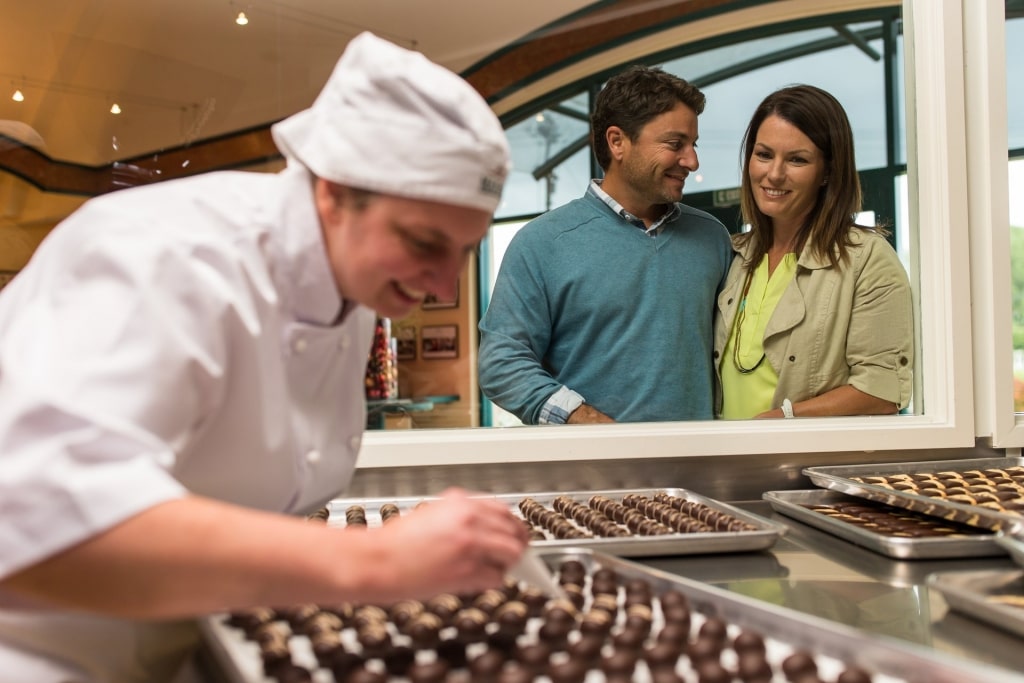
Makana Confections
Bag bulging with purchased beeswax candles and honey-based skincare products, you’ll arrive at Makana Confections. Tour their chocolate factory before a tasting of their indulgent handmade creations.
Take a Walking Tour of Russell
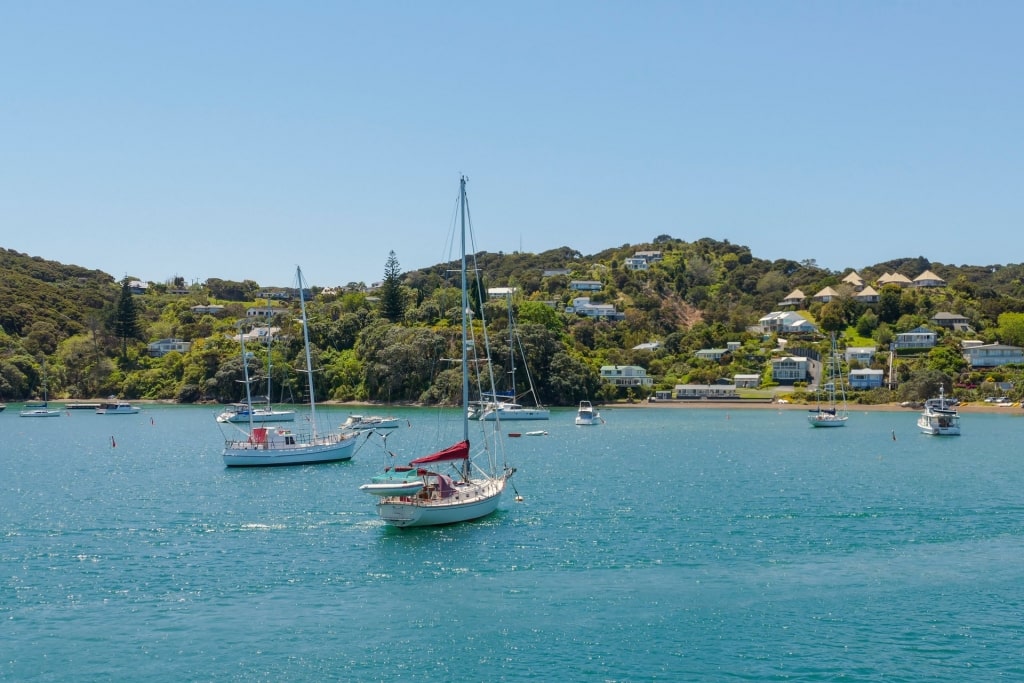
Russell
Before Russell became New Zealand’s first capital city, it was a prosperous Maori settlement innocently known as “Koroareka” (which translates as “how sweet is the penguin”). It benefitted from the area’s subtropical climate and its placement on the shores of the bay ensured easy access to what is today a renowned area for game fishing.
When the Europeans arrived and trading with the Maori began in earnest, Russell’s more colorful history began. A walking tour of Russell is one of the most engrossing things to do in the Bay of Islands.
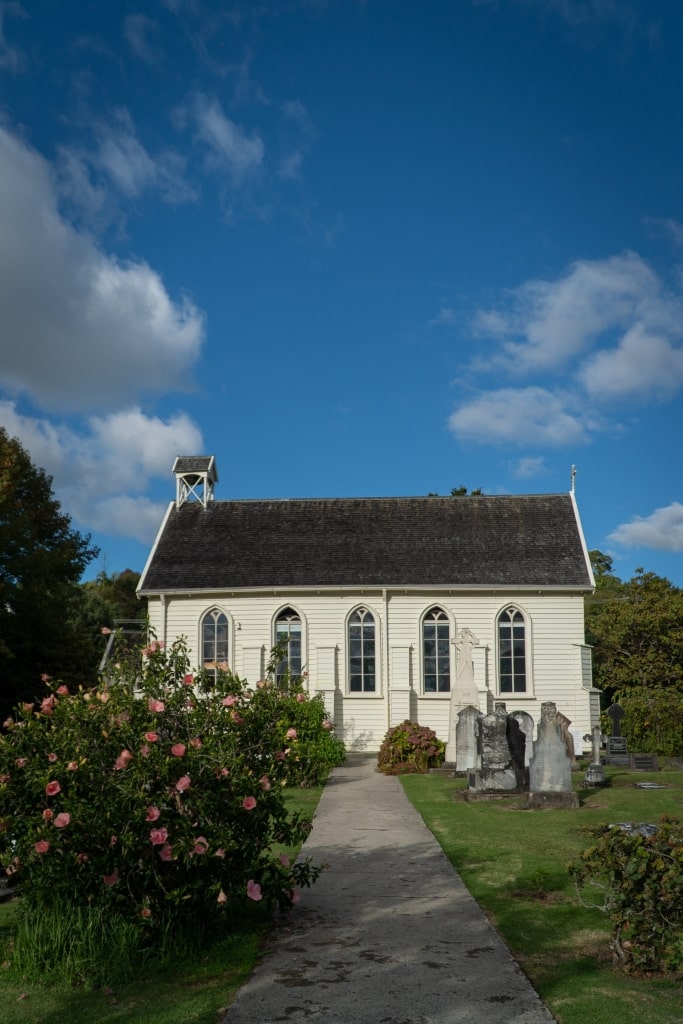
Christ Church, Russell
On the tour, you’ll visit indigenous and European historic sites. You’ll see Christ Church, where services were conducted in both English and Maori, as well as The Duke of Marlborough, the country’s first pub. You’ll learn about the lives of colonial missionaries and brawling whalers, and hear tales of brave Maori warriors.
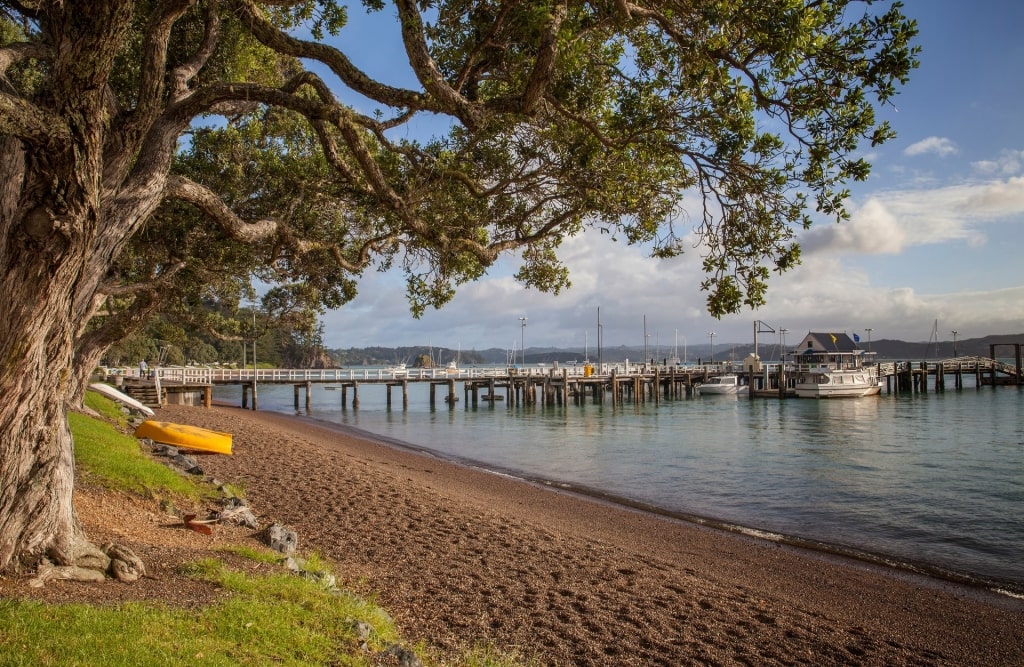
Russell
What should you not miss in the Bay of Islands?
One of New Zealand’s most attractive and tranquil corners, the Bay of Islands offers a compelling mix of kauri forest and frontier history.
It’s an essential stop on any visit to New Zealand, where you’ll unearth the origin story of this remarkable nation. There’s much to discover, from artisanal food producers to adventurous day trips, historic missions, and natural beauty.
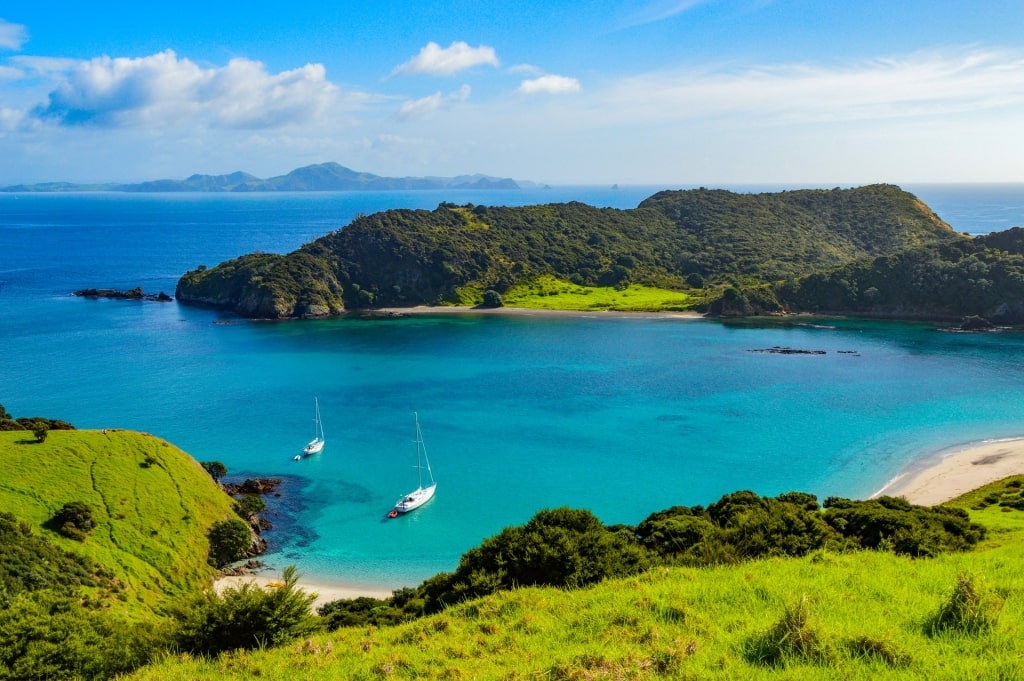
Paihia
Is the Bay of Islands worth visiting?
With its subtropical climate, picturesque bay, and intriguing past, the Bay of Islands is one of the most worthwhile corners of the New Zealand archipelago to visit. Exploring the charming villages along its coast or hiking its verdant trails, you’ll quickly fall for this region’s laid back vibe and handsome vistas.
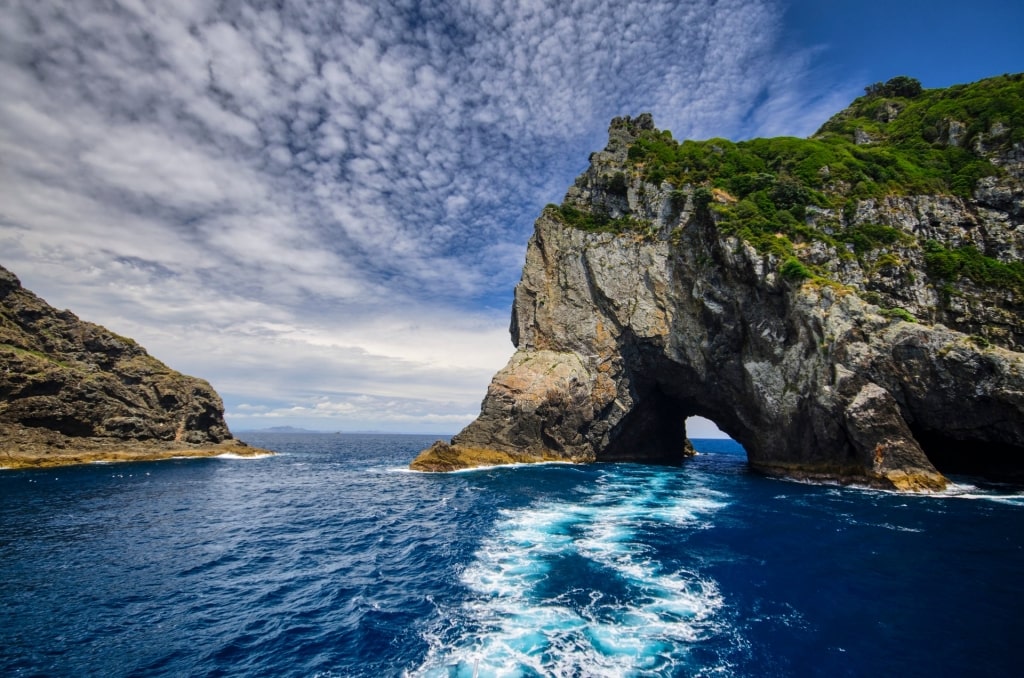
Piercy Island
Experience all of these unforgettable activities on a cruise to the Bay of Islands. From incredible natural vistas, astonishing frontier history, and world-beating wines, New Zealand is a trip of a lifetime.
Browse our cruise itineraries online and book an incredible vacation to New Zealand.
